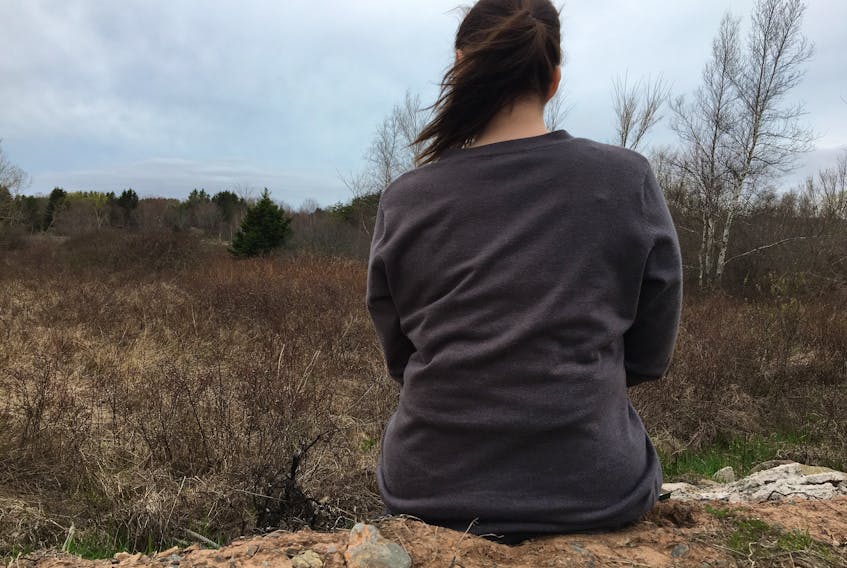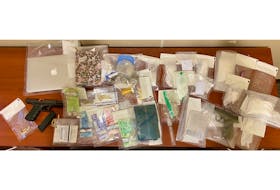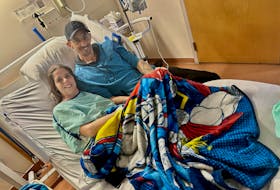NEW MINAS, N.S. — It takes them away - from their home, family, friends and from all other aspects of the life they once knew.
Const. Kelli Gaudet of the Kings District RCMP was one of several presenters at the recent “Taken” conference on human trafficking in the Annapolis Valley held at New Hope Wesleyan Church in Kentville.
There were testimonies from victims and others who have their lives directly impacted by human trafficking. Gaudet said presenting there was a “powerful” experience. Police view human trafficking as a “modern day form of slavery.”
Victims may not know who to turn to for help, they may be too afraid to seek help or they may not even recognize that they are a victim of human trafficking. It’s possible that they have been conditioned to think that there are no options available.
“Human trafficking, what we define it as, involves controlling, forcing, intimidating or deceiving a person in order to exploit him or her through various forms of sexual exploitation or forced labour,” Gaudet said.
She points out that sexual exploitation of females is most common. It remains illegal to purchase sex and, by doing so, you may be financially supporting human trafficking activity.
Traditionally, traffickers have focused on vulnerable women and girls – often those with a pre-existing trauma in their lives. The most common age of girls being trafficked is 14 to 16 years but there are no age limits when it comes to who the traffickers will lure and victims could be male or female.
Victims of human trafficking often isolate themselves, deserting family and friends. If this happens, it’s important for parents to push to maintain contact. Gaudet said the trafficker’s end goal is to isolate the victim.
Gaudet said that, from the outside, it may appear that the perpetrator and victim are in a boyfriend-girlfriend relationship. At the beginning, the victim usually thinks that she is in a relationship with the trafficker and that she is choosing a lifestyle but that isn’t the case.
“Emotional, mental and physical abuse, intimidation and control; that’s what’s happening here, as well as confinement and isolation from family and friends,” Gaudet said. “That’s really important for people to understand, is when you look back, there’s always some warning signs.”
Once involved, the victim is exploited and controlled, making it difficult to leave. Girls and women are being trafficked in Nova Scotia every day. Traffickers are now expanding their targets to women and girls in rural areas of the province.
Parents must be vigilant
Parents and guardians should know who their daughters are dating and are encouraged to talk to their children if they think something might be going on. Traffickers perhaps promise a better life or shower potential victims with gifts. If parents recognize that this is happening, they are encouraged to make a point of meeting the individual behind it.
Gaudet said it’s important for parents to know what a child is posting on social media websites. Personal or identifying information and addresses can be used against them by those who seek to exploit them.
Both men and women act as recruiters on behalf of traffickers and may be victims themselves. They identify young girls and women to approach, make an introduction and facilitate an introduction to the trafficker.
In some cases, traffickers will “friend” the potential victim on social media. They start a conversation and eventually convince the potential victim to meet up. From there, the stages of human trafficking begin: luring, grooming and gaming, coercion and manipulation and finally exploitation.
“He controls every single aspect of her life, where she no longer has to think because he is making her decisions,” Gaudet said.
For example, Gaudet suggests that parents should sit down with children and review with them who their social media contacts and associates are and how they came to know them.
Traffickers find ways to keep young victims out of school, helping to ensure dependency on the trafficker. Victims are often taken out of Nova Scotia and are transported to other areas of the country. Sometimes – but not always – missing persons reports relate to human trafficking activity.
Gaudet said that what inspires her to help is knowing what the victims and their families are going through. People, including police, care and want to help victims of human trafficking.
“Nobody, nobody, deserves to live like this every day,” Gaudet said.
Police advise that if something seems off, it likely is. If you find yourself thinking that something doesn’t seem right, it’s time to start asking questions.
Getting help for victims
The RCMP is focused on getting victims to safety and connecting them with the resources and supports they need while investigating their traffickers. More police officers are being trained to recognize signs of human trafficking and how to investigate it.
There are resources available, such as RCMP Victim Services and NSTAY (Nova Scotia Transition and Advocacy for Youth), an organization that the RCMP works with that helps victims of human trafficking and their family members.
The RCMP is partnering with community groups and organizations and using opportunities such as media interviews to help educate the public. Police in Nova Scotia are also supporting a campaign to educate hotel and transportation workers on identifying signs of human trafficking.
Gaudet said concerned members of the public can help by starting conversations. They can support or volunteer with community groups with a focus on raising awareness and educating the public about human trafficking.
If you are or have been a victim of human trafficking or believe it is happening to someone you know, call or text the RCMP tip line at 902-449-2425. The line is monitored 24 hours a day by a member of the Federal Serious and Organized Crime Section and all calls are confidential.
If a caller wishes to remain anonymous, he or she can call Nova Scotia Crime Stoppers at 1-800-222-TIPS (8477) or text TIP202 and your message to ‘CRIMES’ (274637). Secure web tips can be submitted at www.crimestoppers.ns.ca.
Nova Scotia: human trafficking 'epicenter'
Stephen Schneider of Wolfville, a professor of Criminology at Saint Mary’s University in Halifax, said that Nova Scotia has become an “epicenter” of human trafficking.

For example, he said that an organization known as North Preston’s Finest, which started out as a small group of pimps in the Preston area, is now an inter-provincial organized crime group.
He said they’re known to be trafficking young women in the greater Toronto area, where victims are put to work in brothels and strip clubs, for example.
Schneider said any police officer working to combat human trafficking or prostitution in the greater Toronto area knows about this organization. There have been a number of arrests and convictions of individuals from Nova Scotia on human trafficking charges in Ontario.
Schneider said human trafficking is a “significant problem” considering the toll it takes on young women.
“They’re (the traffickers) constantly striving to get younger and younger women and teenaged girls in the trade,” Schneider said.
A lot of people think human traffickers are bringing women into Canada from other countries. While this does happen, Schneider said his research indicates that most women trafficked in Canada are Canadians. There is a “disproportionate” number of African Canadian and Aboriginal women being targeted.
“They prey on the most vulnerable women in society, which is not surprising,” Schneider said.
He said the problem is “heartbreaking.” Schneider has worked with human trafficking victims through his work with at-risk youth.
Be on the lookout
According to the RCMP, some warning signs that a young person could be a victim of human trafficking include:
- Constantly having to check in with someone via cell phone with an urgency to call or text a response.
- Being escorted and-or watched.
- Isolation from family and friends.
- A lack of identification.
- Changing addresses frequently and-or often staying in hotels.
- Having no proof of legitimate employment.
- Unexplained injuries or bruises.
- New tattoos (possibly an indication of branding or ownership).
- Changes in physical appearance such as hair and nails always being done.
- Unexplained gifts such as new clothing, lingerie, designer shoes and handbags.
RELATED:









